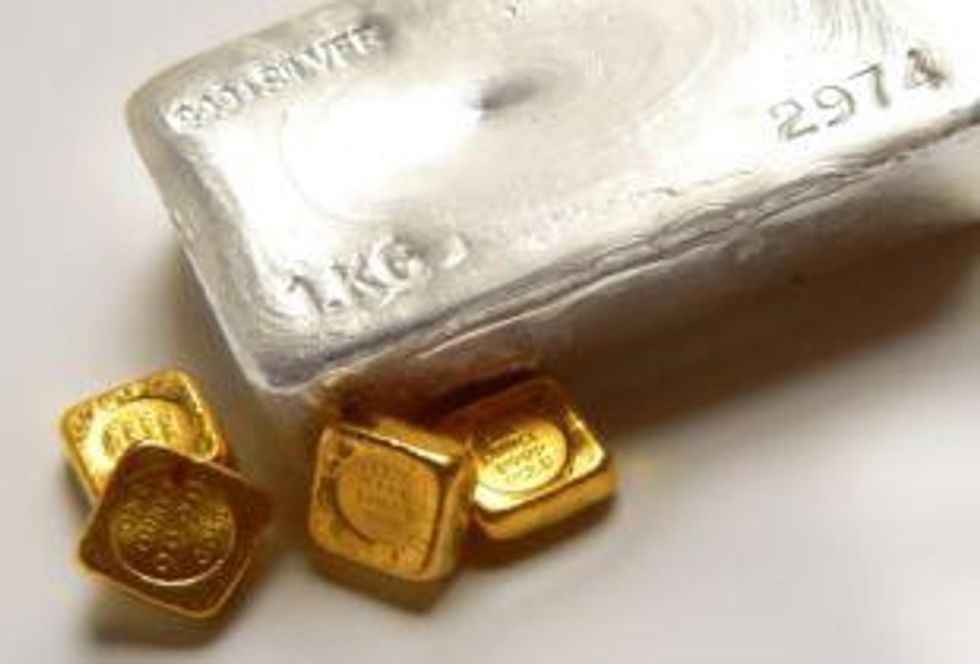Despite the risk inherent in a volatile market such as silver, many investors still find the white metal an attractive investment as it has the potential to bring far greater return on investment. The ROI for silver can surpass gold exponentially, as price movements over the last year have shown.
The price of silver has closely tracked that of gold during the yellow metal’s recent bull run. Silver’s role as a precious metal has, at times, eclipsed any price negative news impacting much of the industrial commodities, a sector responsible for the majority silver demand.
Silver benefits from gold’s rising prices largely because investors, whether in the paper or the physical markets, view it as an attractive leveraged play on gold. Silver offers exposure to the rising demand for safe haven assets at a cheaper price, earning it the moniker “poor man’s gold.”
Of course, choosing silver as an alternative to gold has its risks, especially since the white metal isn’t entirely a precious metal. Silver’s price movements can be heavily impacted by favorable or unfavorable market sentiments regarding the health of the industrial sector, making the silver market highly volatile and prone to large swings in prices—it isn’t called “the devil’s metal” for nothing, as Mineweb’s Lawrence Williams points out.
“Silver has been showing its two faces which have been working against each other in the most recent environment,” writes Williams. “It is considered both a precious metal with monetary overtones and also an industrial metal – two faces controlling its investment parameters.”
A prime example of the risks silver’s volatility poses for investors is the shock the silver market experienced in May as the price plunged from the nearly $50 an ounce to around $39, the biggest three-day drop since 1983, before slipping even further to $34 an ounce, as new margin requirements prompted investors to sell in droves.
Worth the risk?
In spite of the risks, many investors still find silver an attractive investment as it has the potential to bring far greater return on investment. The ROI for silver can surpass gold exponentially, as price movements over the last year have shown. From August 31, 2010, the price of silver year-over-year gained 115 percent compared to 47 percent for gold; meaning, that one hundred ounces of gold you bought last year for $124,770 made you $57,750 if you sold it one year later. However, you could have put that $124K all into silver and made nearly $143K for a total ROI of 147 percent more than your return on gold.
Over this next year, analysts expect gold prices to reach even higher and for silver to continue outperforming gold. “When we look at gold versus silver, we feel that silver prices are going to enjoy more of a gain over the next year or so. I think by the middle of next year silver will be sitting at around $80,” TS Capital CEO David Stroud told Bloomberg Television earlier this month, calling silver “the perfect alternative” to gold.
Asian investors think so . . .
According to the World Silver Survey 2011— produced for the Silver Institute by GFMS — world investment in silver rose 40 percent in 2010 to a new record high of 279.3 million ounces, with major demand coming from silver-backed ETFs and the physical markets.
Strong demand from Asian markets is a large factor in this growth with import levels reaching record highs. Silver’s allure as a cheaper alternative to safe haven gold is especially attractive to the growing middle class in China and India, as well as those who have traditionally used gold as a store of wealth but now find it much to costly at today’s prices.
Demand for silver in China grew by 67 percent between 2008 and 2010, according to the Hong Kong Mercantile Exchange, which recently began trading US dollar and Yuan denominated silver futures contracts due to the amazing growth in silver investment demand.
Growth in demand from this region, especially in the physical markets, is expected to grow another 30 percent this year. “Physical silver bar hoarding will continue to gain momentum, because Asian, in particular Chinese, investors have a preference for physical rather than futures-based holdings in precious markets,” said Mark Pervan Global Head of Commodity Research at ANZ.
Silver demand from India, the world’s fourth largest consumer of the metal, is expected to do well in 2011 and in 2012 as healthy monsoon seasons are increasing the purchasing power of rural Indian farmers who account for 60 percent of India’s total silver demand.
. . . and so does Eric Sprott
Silver’s cheaper cost and potential for greater returns relative to gold also leads investors to exchange gold for silver holdings, as Eric Sprott’s charitable organization, the Sprott Foundation did earlier this month. The Foundation sold two million units of gold holdings and used the proceeds to purchase silver.
Sprott, who has called silver “the investment of this decade,” is among the silver bulls who believe the gold:silver ratio—currently at around 1:44 — is on its way to falling back towards the historical level of 16:1 meaning silver is headed for over $100 an ounce in the near future.
Most Silver Investing News readers would agree with Sprott. According to a reader poll conducted a few weeks ago, over 45 percent of the 753 respondents believe silver could reach $100 an ounce by Q2 2012, with another nearly 40 percent saying silver will reach that level over the next few years. Some silver bugs, nearly 10 percent of readers polled, are betting on the white metal reaching the triple digits by the end of this year.
